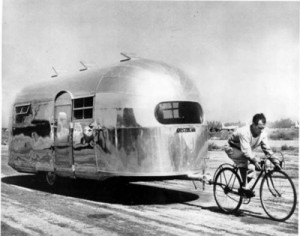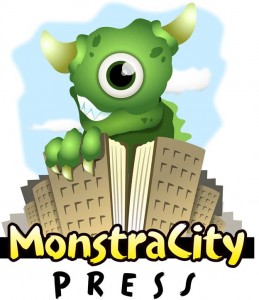
One reason I started this blog was to keep track of my milestones. Milestones in a writer’s life include starting a project, finishing a project, finding a market for a project, seeing that project offered for public consumption, and receiving some form of public acclaim (or damnation). Milestones are of great importance to the writer who reaches them, of course. They may be of major or middling interest to that writer’s readers.
I just hit a milestone earlier today. I finished my initial draft on the completed manuscript of my eighth novel (ninth, if I count my learner’s book, Draining the Everglades, which I generally don’t), No Direction Home. Much like The Good Humor Man, or, Calorie 3501, No Direction Home is a near-future, mid-century extrapolation of current societal, political, economic, and technological trends and events. My just completed book extrapolates these humdingers thirty-five years out: the decline in homeownership in America; the astronomical growth in the cost of higher education; globalization’s pressure on Americans’ wages and benefits; the unsustainability of the retirement and elder health care systems now in place; and major advances in battery technology, akin to what has occurred with microprocessors in the last thirty years.
Thirty-five years from now, most middle class Americans have abandoned the dream of home ownership. They live, gypsy-like, in their electric vehicles, traveling from temporary job to temporary job around the country. Social Security, Medicare, and Medicaid are fading memories of a lost golden age. Major advances in battery technology have come with a side product: the illegal, life-shortening drug called vent, which the terminally ill and elderly take, both to ease their pain and to support themselves by selling their drug-induced hallucinatory visions and memories to millions of online subscribers.

My protagonists are two young people from different worlds, one forced out onto the roads by upbringing and economic necessity, the other sampling life on the road by choice. Fate gives them a child, but they are both highly immature, not ready for a shared life or shared parenthood. Eighteen year old Bud Shinsky, son of a Long Island factory owner, tries to win back the love of gypsy Tula Ann Decca, the young mother of his infant son. But Tula Ann has decidedly different ideas. And so does her uncle, Robert Decca, the ailing drifter who, thirty years before, founded the movement and lifestyle that changed America from the land of the rooted to the land of the rootless. Robert has terminal cancer. He wants to find Tula Ann, whom he hasn’t seen since she was a child, before he becomes an invalid and has to go on vent. He wants to bond with her and pass on to her his legacy: acting as secret venture capitalist of the gypsy world, funding gypsy entrepreneurs’ dream businesses.
Bud’s initial attempt to reunite with Tula Ann, who has become a member of the ChanningHammer crew of gypsies, goes terribly awry in the tomato fields of South Florida. After Tula Ann flees the ChanningHammers, Bud finds himself forced to take her place in the crew so that she will not be socially “kaputted,” denied a role in gypsy society for breaking her contract. Bud soon finds himself handed responsibility for the ChanningHammers’ resident vent head, David Zodi. Tula Ann bounces from job to job on the road, doing lighting and sound board work for an itinerant theater company, then working as a living history re-enactor at a Twentieth Century Christmas Village. Her jobs force her to find a nanny for infant Dean Moriarty, but the nanny, Margaret Spangler, carries a terrible secret. Will the rough life lessons that residence on the road provides to Bud and Tula Ann bring them closer, or drive them even farther apart?
The novel asks these timely questions: what is the future of American capitalism? What will replace the American Middle Class Dream of college education and homeownership should that dream become obsolete, or stray out of reach for the majority of the population? Does globalization mean an endless economic “race to the bottom,” or will a new equilibrium be reached, different from what we Americans are used to now, but livable? How will society in future decades care for its increasing population of the very old and the chronically ill? How will it raise its children? Are we as a society becoming dangerously dependent upon electronic interfaces which can be obliterated by a solar flare at any second?
I aimed for the fences with this book. I wanted to write a book with big emotions and a huge payoff at the end, a book that readers would not soon let slip from their memories. With its completion, I now have five novels currently unplaced, all searching for homes. I’ll very soon go to go back to The Bad Luck Spirits’ Social Aid and Pleasure Club at my agent’s request and give it one more round of editing before he sends the book out (and earlier version was unsuccessfully marketed by my former agent). After that, I’m going to begin work on a new type of project for me, a middle grades YA science fiction book called Lizardland. My oldest son, Levi, has been begging me for the last couple of years to write a book that he can read; that’s one motivation. My other motivation is to set out in a different direction from what I’ve been doing and trying something else. A common definition of insanity is continuing to do the same thing over and over again and expecting a different result, and I now have five unsold adult science fiction and fantasy novels sitting on my hard drive, the fruits of eight years of labor. I may be edging into insane territory (not as insane as Mack Reynolds, who apparently died with the manuscripts of more than thirty unsold novels sitting in his closet, but heading in that direction).
All of my novels (with the exception of Draining the Everglades) will eventually be made available to any readers who are interested. In this age of SmashWords and CreateSpace, why the heck not? But, depending on the fate of No Direction Home, that novel may end up being the last adult novel I write with traditional publication (dead-tree book put out by a major New York or second-tier independent publisher, sold primarily in bookstores) as a goal.
What sort of a difference will that make, if any? That depends on whether one considers ebooks to be merely a migration of an existing media (printed books) to a new platform, the way recorded symphonies migrated from vinyl long-play records to CDs, or a brand-new medium.
Early, very anecdotal evidence suggests that readers may prefer for their ebooks to be shorter than their printed books. Some research has indicated that a reader retains less information, or retains information less thoroughly, when reading on a screen, as opposed to reading from a printed page. If valid, this could indicate that readers, or at least some readers, might experience difficulties keeping characters, settings, and plot developments straight in very long manuscripts read on an e-reader.
The length of popular novels has varied over time as the delivery platform and sales environment have changed. During the pulp magazine era of the 1920s through the 1950s, popular novels tended to be short, so as to lend themselves to serialization in a limited number of monthly magazine issues; most novels published in the pulps weren’t much longer than 50,000 to 60,000 words. During the 1960s and 1970s, when most popular novels were published as paperback originals, the bulk of those paperbacks were sold on spinner racks in locations such as drug stores, cigar stores, supermarkets, and department stores. Spinner racks would not hold very thick paperbacks, and in order to sell more copies in the physically limited amount of space provided, publishers put out a lot of fairly slender books; average popular novel length for these decades was about 60,000 to 70,000 words.
From the late 1970s throughout the 1980s and 1990s, however, big, fat books were in fashion, led by reprints of Tolkien’s Lord of the Rings trilogy, Stephen King’s novels, and various historical epics and multigenerational family sagas. For the first time, beginning with Anne McCaffrey’s The White Dragon in 1978, major science fiction novels began to be published by large New York houses in hardcover. This format allowed for physically longer books, as did the trade paperbacks which followed. By the time I began marketing Fat White Vampire Blues in 2001, editors didn’t blink an eye at manuscripts which clocked in at 135,000 to 150,000 words. But within a few years, the publishing industry took a major downward turn, and considerations of economy led editors to look for shorter manuscripts once again, not much longer than 100,000 words. Book sellers like Barnes and Noble and Borders could fit more copies of a thinner book on their shelves, and publishers could squeeze more copies of thinner books into each shipping carton.
Ebooks, of course, are not limited by considerations of shelf space or the size of shipping cartons. But they may end up limited by the attention spans and comfort levels of readers who do their reading on e-readers. If I had to guess, I would suspect that many novels written specifically for the e-reader market will top out around the size of the paperback originals of the 1960s – 60,000 to 70,000 words at the outside, with many ebooks being shorter. Series novels which once would have been published as 200,000 word leviathans in hardback will be e-published as three much shorter segments, if they are intended to be ebook originals.
This will require some rethinking on my part, and a conscious redirection of many of my longstanding writing habits. I’ve never written a novel shorter than 95,000 words. Perhaps working for a couple of years on YA novels, which tend to be a good bit shorter than adult novels, will give me good practice. We will see; we will see… I can’t quite make out the direction home yet, but I know I will eventually get there, even if “home” is a place I wouldn’t recognize from the here and now.
Like this:
Like Loading...








